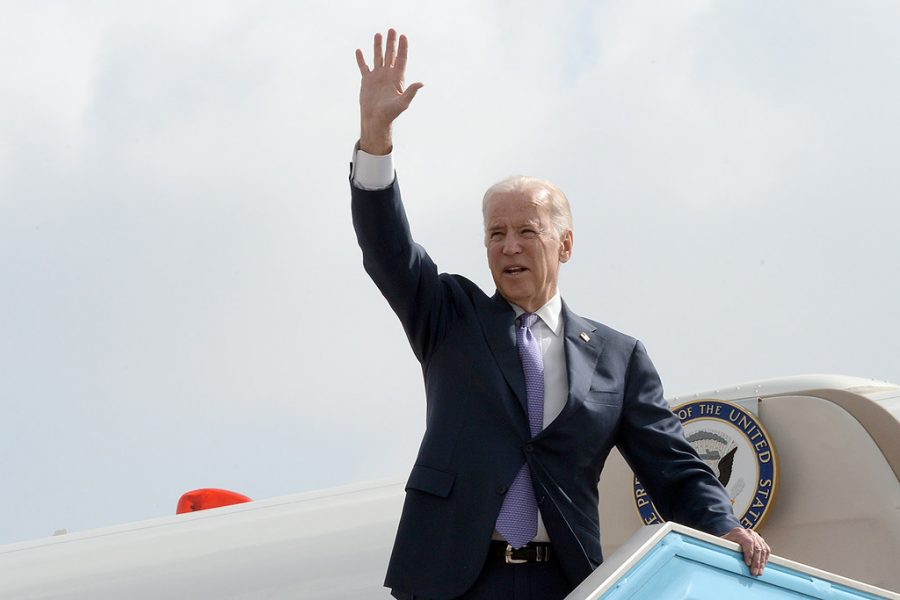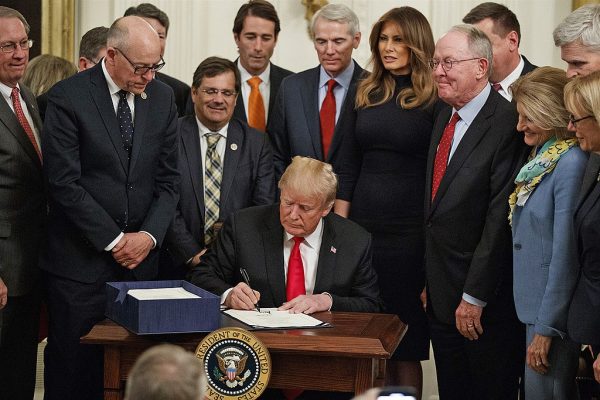Biden’s Stimulus Bill
Photo by Stern Matty
April 12, 2021
A year since the pandemic began, the U.S. is suffering from the worst recession since the Great Depression. Over 14 million citizens have been left unemployed, with at least 100,000 businesses shut down. Food insecurity and homeless rates have doubled in just one year. As a countermeasure, President Biden recently signed into law yet another “Coronavirus stimulus.”
Since 2020, Congress and the President have approved large funding bills, or “stimulus packages,” to sustain the faltering American economy. There have been three main bills approved by Congress and the President: the CARES Act, the Consolidated Appropriations Act, and the American Rescue Plan Act. The former two consist of $2.2 trillion and $900 billion dollars respectively, and were passed by President Donald Trump. Passed on March 11 of this year, President Biden’s American Rescue Plan is the most recent bill, totalling $2.3 trillion dollars. All three bills have primarily focused on the monetary support of individuals, families, and businesses. However, Biden’s new Rescue Plan is somewhat different in certain functions and purposes.
A primary feature of the American Rescue Plan is direct payments. U.S. citizens with annual incomes under $75,000 have been sent government checks of $1400 dollars. The check’s value gradually decreases with higher income rates, disappearing completely at the $80,000 mark. Although direct payments from COVID-19 bills are hardly new, a difference is that Biden’s plan makes them available to immigrant spouses. Although previously barred from the CARES and the Consolidated Appropriations Act, American families with mixed immigration statuses will receive full benefits this time around, which is a subtle but profound difference in Trump’s and Biden’s bills.
President Biden has also directed funding to state, local, and tribal governments. Depending on population, unemployment rates, and other factors, $350 billion has been distributed to states, cities, and Native tribes across the country. Geared towards groups particularly affected by COVID-19, this massive fund will support essential businesses, healthcare, and more. In essence, state and local governments will respond to the public health emergency, support the faltering economy, and fill their own dwindling coffers through these new funds.
Finally, President Biden has diverted $160 billion towards pandemic healthcare. By funding hospitals and other medical facilities, Americans will see more free public vaccines, increased testing facilities, and rapid-result COVID tests. Notably, for the first time, stimulus-package funding has been diverted towards COVID-19 prevention.
While a huge undertaking, the American Rescue Plan is a crucial program for the U.S. at this point in time. The Plan not only funds gaps in the economy and healthcare, but diverts money towards future infrastructure, taxes, poverty, and other sectors of society. To escape these trying times, it is imperative to also consider the future. Biden’s American Rescue Plan brings the U.S. one step closer to not only ending the pandemic, but coming out of it stronger than before.





















Ren Topping • Apr 30, 2021 at 2:58 PM
Great article Jon Jon! It was very interesting to learn about the new stimulus bill and the differences between it and the ones from the Trump administration.
Sena Chang • Apr 30, 2021 at 2:49 PM
You compared stimulus packages that the current and past administrations have passed, which I found gave me some background as to where your claims had stemmed from. Great job! As a follow-up to this article, you could possibly focus on the positive and negative effects that this stimulus bill may have on the American economy in general, both in the long and short term.
Takuya Yoden • Apr 30, 2021 at 12:21 PM
I didn’t know about the loss (like how many people lose their job) since the pandemic started and gave me an impact.
Your article was well organized and was easy to read. I like how you describe each bill so I know the difference between them and how each bill is important.
Louis Avondet • Apr 29, 2021 at 12:51 PM
Great job! I really like how you were able to deliver practical and interesting information in a nice package that is easy to understand. I also appreciate how you offered some context about certain things for people who might not have been following recent news regarding this topic.
Sam Barbir • Apr 29, 2021 at 12:47 PM
Very nice article JonJon, I appreciated your succinct article that helped me understand this very interesting piece of news. I also liked how you made sure to include specific numbers that are involved in the stimulus bill, it provided lots of context.